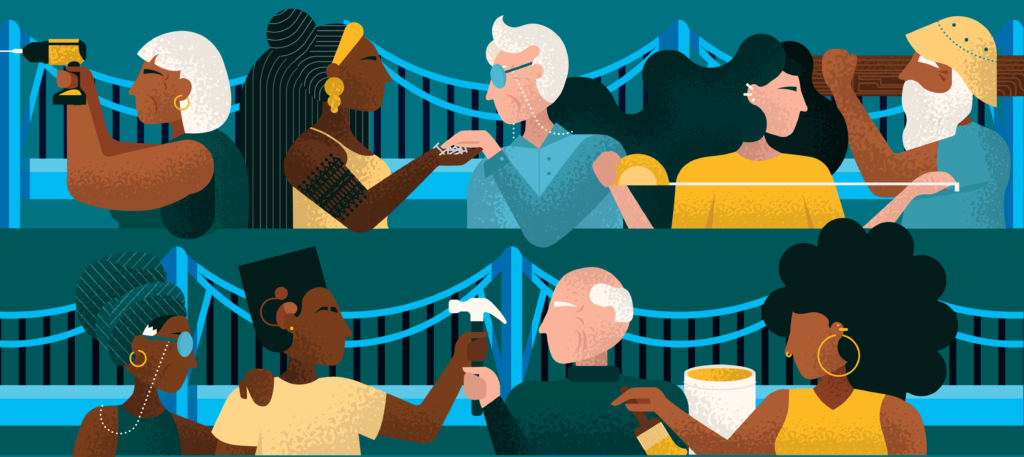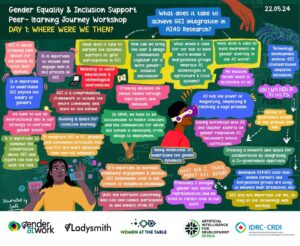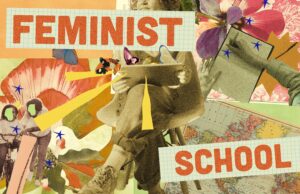As an organizational consultant, a human rights activist and, for the past 25 years, a women’s rights specialist, I have been in hundreds of rooms in meetings and workshops. My goal has been to help learning happen around gender relations and help organizations do something to improve their ability to deliver services to women and other marginalized people. But, one moment stands out as particularly memorable, pointing to what I was trying to do in all those rooms.
It was 2004, and Michal (my colleague and friend) and I had traveled to the Centre for Applied Legal Studies (CALS) at South Africa’s Witwatersrand University. We were leading an action learning process that was intended to help CALS bring a stronger gender perspective to their work. They felt that although they carried out some important research on gender and the law, gender did not have enough prominence overall in the research of the center. How could they ensure that the rest of the faculty integrated gender into their research work?
CALS was a prestigious center in South Africa; it had been involved in framing South Africa’s post-apartheid constitution a few years previous. Michal and I were sitting with three of their faculty, including the Chair. One of the faculty, Likapha, was older than the others and a specialist in traditional law. To say she exuded gravitas and presence would be an understatement.
Of the five people in the room, I was the only man and the only non-African. As a white Canadian, I am deeply aware of what little understanding I have of cultures other than my own and am very careful about my right to propose solutions or give advice. I am keenly aware of how much of an outsider I am. To me, that means while I may have a different and helpful perspective to offer, I also have less knowledge than the local participants. It is important those I work with are deeply engaged in the thinking about what can change and how.
Michal and I had led the team through two previous days of discussions. We had been experimenting with a variety of educational techniques in order to maintain energy and move the discussion to deeper, more heartfelt levels. We had done Tai Chi, made drawings and diagrams, and done relaxation and visualization exercises. The team had responded with enthusiasm but we were still nervous as to how all of this had been received.
Now it was the wrap-up on the final day and one by one people spoke positively about our time together. But I was waiting to hear what Likapha would say. When it was Likapha’s turn, she looked me in the eye and simply said, “You have made yourself a good resource.”
I felt wonderful.
This moment summed up both the challenge and the way forward for me. I realized I would always be an outsider in this work, and that I have no right to tell anybody what they should do. Instead, I need to continuously find ways to make myself a good resource in someone else’s world.
I haven’t always been a good resource. Once, I got into an argument with a Bangladeshi friend who I felt was not doing enough to combat gender inequality in his organization. We were at a conference and he was talking about the work we had both been involved in. When he began to talk about where the work could go, he began to sound very tentative and conservative. Instead of listening with compassion as to why he didn’t feel we could move much faster, I confronted what I saw as a willingness to settle for the status quo. Not a helpful strategy.
What, then, does it mean to be “a resource” as an outsider?
It means being willing to put myself at the disposal of someone else. It means working hard to understand someone else’s situation, what they need, how they learn, and what they want to accomplish. It means not focusing on me as a knowledgeable person and teacher, but on me as a responder, with the control of the interaction in shared hands.
Being a resource also means that it is not my place to judge what is happening, beyond trying to understand what is the next step. I remember helping a Sudanese organization work on what we saw as a gender-based violence program. We were using terms like “violence against women”. The Sudanese women felt that these terms would be inappropriate and would imply blame. They called the program “Home Peace”. I may have experience working with many other organizations, but it wasn’t my place to disagree with them about how the program should be designed in this particular context. These women knew what was culturally appropriate, and what would fit into the learning trajectory of their organization. They lived in the context we together were trying to change.

There are two streams of theory and research that inform this approach to being an effective resource. This first is exemplified by Paulo Freire, the Brazilian educator and author of Pedagogy of the Oppressed. Central to Freire’s idea of learning for change was his insistence on the active engagement of the learner in defining the issues and the action strategies. At first glance, it may seem far-fetched to equate the techniques of teaching Brazilian illiterates with helping modern organizations to become more gender equitable. But the core educational task is the same. To paraphrase Freire, the goal is to create a space where people become “subjects” who are prepared to reflect critically on their world and name that world. The energy that arises from this critical reflection is the fuel for the ongoing transformation of power relationships in that setting.
However, creating a reflective space is not enough to be a good resource. The second important stream of thinking is exemplified by Matt Miles’ research on change in schools. Miles was an American educational researcher who wrote Innovation Up Close: How School Improvement Works, a ground-breaking book on school improvement. He found that organizational learning requires a somewhat undefinable mixture of pressure and support.
These are lessons I’ve taken to heart in my work as a good resource.
Our own research on gender and organization development, “Advancing Gender Equality in Bangladesh: Twenty Years of BRAC’s Gender Action Learning Program,” came to a similar conclusion. We found that general pressure to change, coupled with an equitable reflective space in which participants analyze the situation in their own terms and develop solutions that make sense to them, led to significant change.
As one participant in the BRAC research said, “[the program] changed my mindset and at the same time helped me to change others’ mindsets. I learned to raise my voice for my right. It gave me the courage to speak up for others, and to talk to local government officials.”
As a “resource”, I need to work in a space where there is pressure or at least interest in change, but also an environment of support that leaves the learner’s right to define the problem and the action in their own terms. There are (at least) two key dimensions of this method:
- The social and power distance between me as facilitator and the participants must be narrowed. I must forfeit any claim of expertise that comes from advanced training or accreditation. The participants are the experts as to what is happening in their context and what they should do about it. My presentation of conceptual material must be for discussion, not influence. My role is to steer the process and build relationships with the participants.
- The relationships and the energy in the room must be open, collaborative and respectful. It is the dialogue that grows out of these relationships that will build durable solutions.
Being a resource takes the attention away from me and my tools and places the attention on the situation and whether or not I am finding ways to be helpful. I am grateful to Likapha for bringing this idea of a “resource” to me.
Many thanks to Ethan Gilsdorf, Michal Friedman and Kalyani Menon-Sen for their helpful comments on this blog.
This blog post was written by David Kelleher, Gender at Work Senior Associate, in the context of his work with IDRC to advance gender equality in development research.







